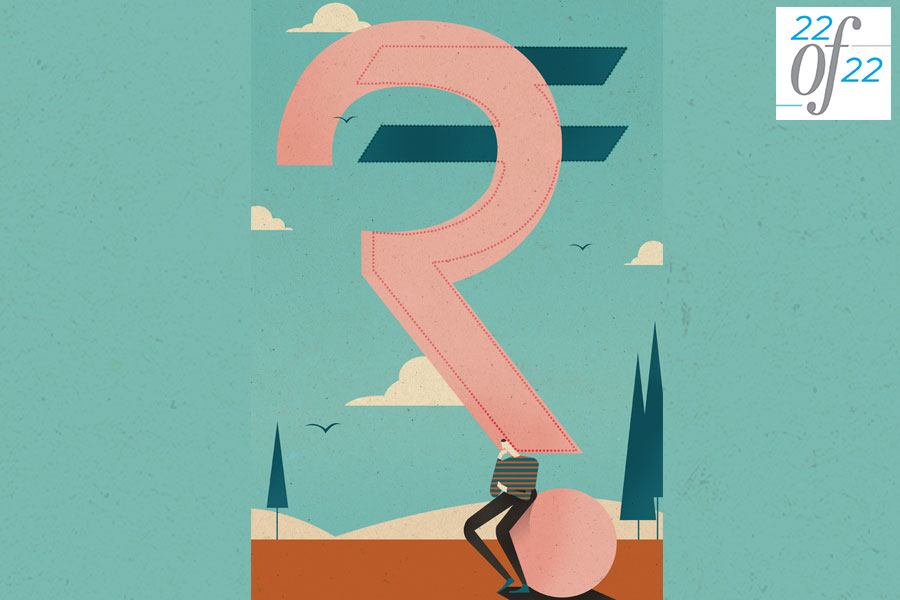
 Inflation soared to 9.1 percent in the US in July 2022—the highest it’s been in four decades. Illustration by: Chaitanya Dinesh Surpur
Inflation soared to 9.1 percent in the US in July 2022—the highest it’s been in four decades. Illustration by: Chaitanya Dinesh Surpur
Since the start of the year, the rupee has slid by around 10 percent against the US dollar, even breaching the 83-per-dollar mark in October, a record low.
Since mid-November, however, the rupee begun to strengthen against the greenback, hitting levels of Rs 80.50 to Rs 81 per dollar. At the timing of writing in early December, the Indian currency was around Rs 82 per dollar. So is the rupee set to recoup in the coming year or can it slide any further?
Finance minister Nirmala Sitharaman had famously said it’s not the rupee that is falling, but the dollar that is strengthening, when asked about it on the sidelines of a World Bank meet. Her statement led to a flurry of memes on social media, but she was, in fact, technically correct.
So why has the US dollar been strengthening?
Third, domestic equities started seeing a surge in inflows thanks to the “China substitution effect”, says Sajal Gupta, executive director and head, FX and rates at Nuvama Wealth Management. China’s zero-Covid policy, the lacklustre performance of its domestic equities market and its tiff with Taiwan led investors to pull money out of China and into other, more promising emerging markets, like India.

As the IMF says, India is a bright spot, but not without exercising caution and careful currency management.
Also Watch-
Check out our Festive offers upto Rs.1000/- off website prices on subscriptions + Gift card worth Rs 500/- from Eatbetterco.com. Click here to know more.



